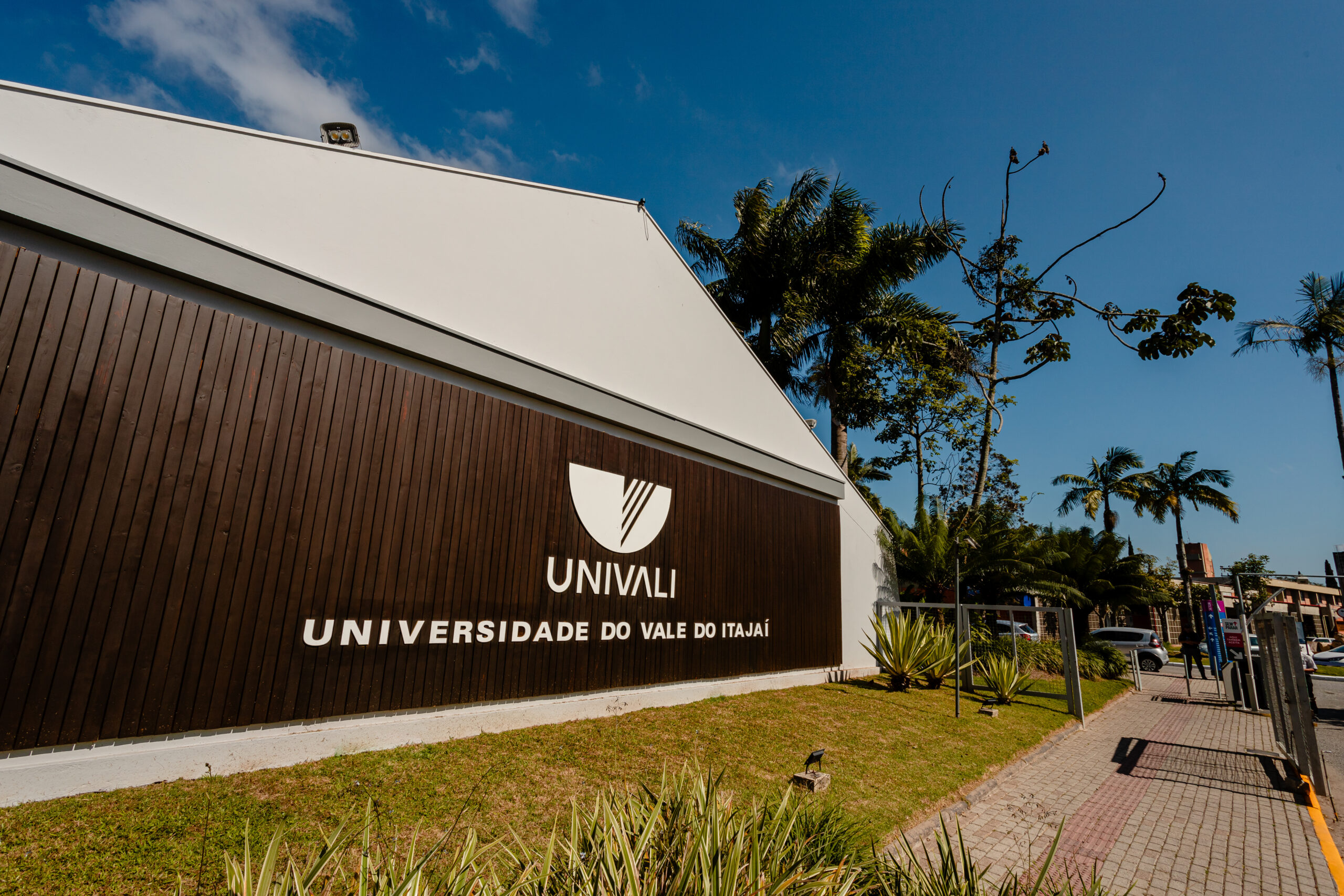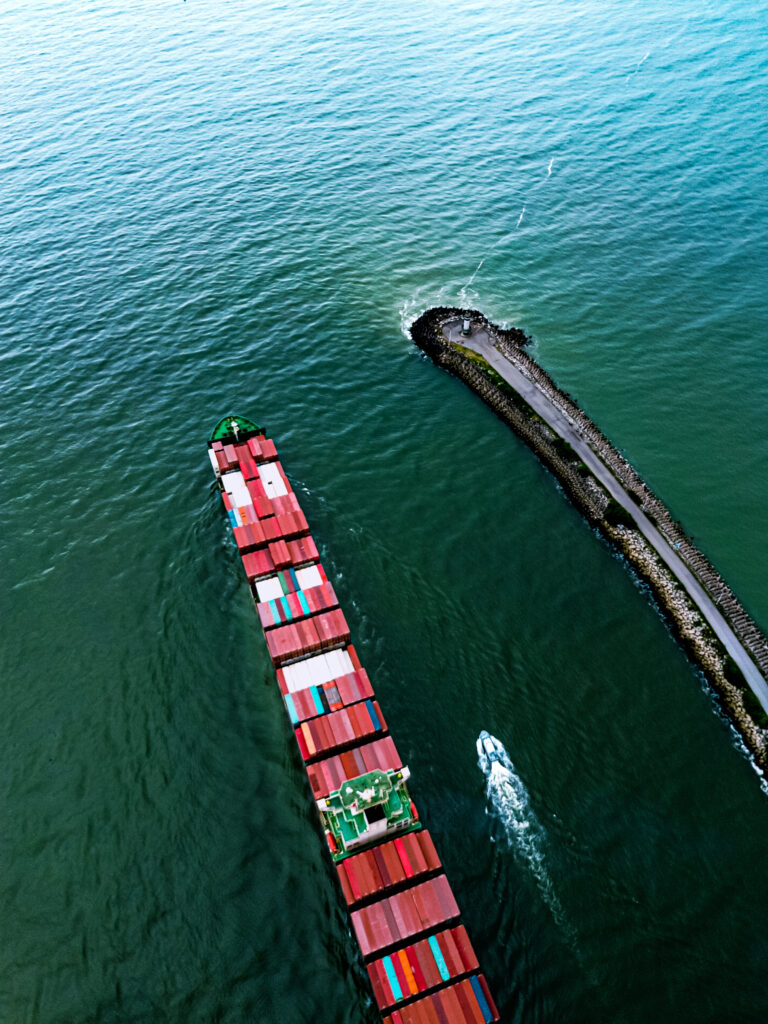VENUE
The conference will be hosted by the University of Vale do Itajaí – UNIVALI, Rua Uruguai, 458, 88302-901, Itajaí (SC), Brazil.
The event will take place at the Campus Edson Vilela (Itajaí).

Campus Edson Vilela (Itajaí) – University of Vale do Itajaí
Photo by: Dales Hoeckesfeld/UNIVALI.
Discover Itajaí
Located on the coast of Santa Catarina in southern Brazil, Itajaí is a vibrant city known for its strong connection to the sea, dynamic economy, and rich cultural heritage. Positioned between the Atlantic Ocean and lush green hills, Itajaí offers visitors a blend of beautiful beaches, scenic landscapes, and a welcoming atmosphere.
With a subtropical climate, the city enjoys warm summers and mild winters, making it a pleasant destination year-round. Itajaí is also recognized as one of Brazil’s most important port cities, contributing significantly to trade, fishing, and maritime activities. Its lively cultural scene, rooted in Azorean and European traditions, is reflected in its cuisine, festivals, and daily life.
Strategically located near major urban centers like Balneário Camboriú and Florianópolis, Itajaí provides easy access to natural attractions while offering the charm and hospitality of a growing, modern city. Whether you seek nature, culture, or innovation, Itajaí is a destination ready to be explored.
Official Tourism Website of Itajaí: https://www.visite.itajai.sc.gov.br/conhecaitajai
General information
- The population in 2024 was around 287.289 residents.
- It has a diverse heritage, with influences from Portuguese, German, and Italian immigrants.
- It’s a safe city in general.
- The best time to visit is during the summer months from December to March when the weather is warm and ideal for beach activities, but for those who enjoy nightlife, the city offers good options all year long.
- The city offers a high quality of life, strong economic base, and university presence. Many people from other cities in Brazil (including big capitals) are coming to Itajaí to build their careers and improve their life.
- The city is home to Universidade do Vale do Itajaí (Univali), the largest university in the state, offering a wide range of undergraduate and postgraduate programs.
Economy
The city has the second-largest gross domestic product and the highest per capita income in Santa Catarina. Key economic sectors include shipbuilding, the fishing industry, and logistics.
- Port of Itajaí was one of the most important in Brazil but went through some difficult times and now it’s regaining its space due to the strategic location and structure.
- Itajaí has a well-established shipbuilding industry, with shipyards producing vessels for fishing, cargo, and offshore oil exploration. Several companies specialize in maritime services, including ship maintenance, repairs, and logistics support.
- Itajaí is known as Brazil’s largest fishing hub, with a robust industrial fishing sector that supplies seafood to domestic and international markets. Many of these products are exported, especially to Europe and Asia, making the fishing industry one of the most significant contributors to the local GDP.
- It has many warehouses and distribution centers, consolidating Itajaí as one of the most important cities in Brazil in terms of logistics.
- Beyond logistics and fishing, Itajaí has a strong industrial base, with factories producing textiles, food products, automotive parts, and construction materials.
- With a pumping economy, quality of life, and the proximity of a luxury market as Balneario Camboriu, Itajaí has one of the most expensive real estate markets in Brazil.
- It has gained international recognition by hosting events such as the Volvo Ocean Race, being the only city in south America to host such event.

Photo by: Merlin Donald, student at UNIVALI.
Local cuisine
Itajaí’s food scene is all about fresh seafood and European influences, especially from Portuguese, Italian, and German traditions. Seafood is at the heart of local cuisine, with plenty of options ranging from upscale restaurants to local markets and food festivals. The historic Mercado Público (Public Market) is a great spot to experience local flavors and culture. Marina de Itajaí is not just a modern nautical complex but also a top dining destination, featuring high-quality international restaurants with stunning waterfront views.
TRAVEL INFORMATION
Most international visitors will first arrive in Brazil through one of the main international airports: São Paulo/Guarulhos International Airport (GRU) or Rio de Janeiro/Galeão International Airport (GIG). From these hubs, there are frequent domestic flights to airports closer to Itajaí.
The nearest airport to Itajaí is Navegantes International Airport (NVT), located approximately 7 kilometers from downtown Itajaí. Navegantes offers direct connections from several major Brazilian cities and select international destinations. The drive from the airport to downtown Itajaí takes about 10 to 15 minutes by taxi, ride-sharing services, or private transfer.
Another option is Florianópolis International Airport (FLN), located approximately 110 kilometers from downtown Itajaí. Florianópolis Airport provides a broader range of domestic and international flights. Traveling from Florianópolis to Itajaí takes around 1 hour and 30 minutes by car via the BR-101 highway, with transportation options including rental cars, taxis, and private transfers.
Both airports offer modern facilities and multiple transportation options to ensure a smooth arrival in the region.
ACCOMODATIONS
Hotel suggestions located near Univali can be found below. The closest accommodations are in downtown Itajaí, but the list also includes options in Praia Brava and in the nearby city of Balneário Camboriú, located approximately 10 kilometers from downtown Itajaí.
Itajaí
Mercure Itajaí Navegantes
- 4 stars
- Address: Rua Dr. Pedro Ferreira, 363, Centro, Itajaí – SC, 88301-030
- Website: Visit website
- Phone: +55 (47) 3249-1100
Novotel Itajaí
- 4 stars
- Address: Rua Lauro Muller, 170, Centro, Itajaí – SC, 88301-400
- Website: Visit website
- Phone: +55 (47) 2104-9000
Ibis Navegantes Itajaí
- 3 stars
- Address: Rua Vereador Abraão João Francisco, 587, Centro, Itajaí – SC, 88302-101
- Website: Visit website
- Phone: +55 (47) 3249-7300
Sandri Palace Hotel
- 4 stars
- Address: Avenida Sete de Setembro, 1675, Fazenda, Itajaí – SC, 88301-201
- Website: Visit website
- Phone: +55 (47) 3404-8000
Hotel Marambaia Cabeçudas
- 3 stars
- Address: Rua Mariana Ribas, 186, Praia de Cabeçudas, Itajaí – SC, 88306-340
- Website: Visit website
- Phone: +55 (47) 3348-0044
Praia Brava
Hilton Garden Inn Itajaí – Praia Brava
- 4 stars
- Address: Rua Delfim Mário de Pádua Peixoto, 900, Praia Brava, Itajaí – SC, 88306-800
- Website: Visit website
- Phone: +55 (47) 3249-9800
Felissimo Exclusive Hotel
- Boutique hotel
- Address: Rua Alles Blau, 201, Praia Brava, Itajaí – SC, 88306-045
- Website: Visit website
- Phone: +55 (47) 3398-0800
Villa d’Ozio Hotel e Cucina
- Boutique hotel
- Address: Avenida José Medeiros Vieira, 982, Praia Brava, Itajaí – SC, 88306-800
- Website: Visit website
- Phone: +55 (47) 99707-7625
Balneário Camboriú
Mercure Camboriú Internacional
- 4 stars
- Address: Avenida Atlântica, 2010, Centro, Balneário Camboriú – SC, 88330-012
- Website: Visit website
- Phone: +55 (47) 3056-9500
Hotel D’Sintra
- 4 stars
- Address: Avenida Atlântica, 1040, Centro, Balneário Camboriú – SC, 88330-003
- Website: Visit website
- Phone: +55 (47) 2104-4000
Discover Santa Catarina
Santa Catarina is one of Brazil’s most prosperous and scenic states, located in the southern region of the country. Known for its diverse landscapes, Santa Catarina offers everything from pristine beaches and lush forests to rolling hills and charming countryside. The state enjoys a strong cultural identity, heavily influenced by European immigration, particularly German and Italian, which is reflected in its architecture, cuisine, and traditions.
Itajaí is surrounded by vibrant cities and natural attractions that are easily accessible and worth exploring. South of Itajaí, visitors can enjoy the stunning beaches of the Emerald Coast (Costa Esmeralda), a region known for its clear waters and preserved landscapes. A little further, Florianópolis—often called the “Magic Island”—offers over 40 beautiful beaches, combining urban life with nature in a unique way.
Just a few kilometers south of Itajaí, Balneário Camboriú is a dynamic seaside city famous for its skyscrapers, bustling nightlife, and gorgeous coastline. To the north lies Penha, home to Beto Carrero World, one of Latin America’s largest theme parks. Nearby, Navegantes serves as a gateway for regional travel. Further inland, Brusque and Blumenau showcase the strong German heritage of the region, with traditional festivals like Oktoberfest and distinct local culture.
Santa Catarina’s combination of natural beauty, cultural richness, and modern infrastructure makes it an exceptional destination for visitors seeking a truly diverse Brazilian experience.